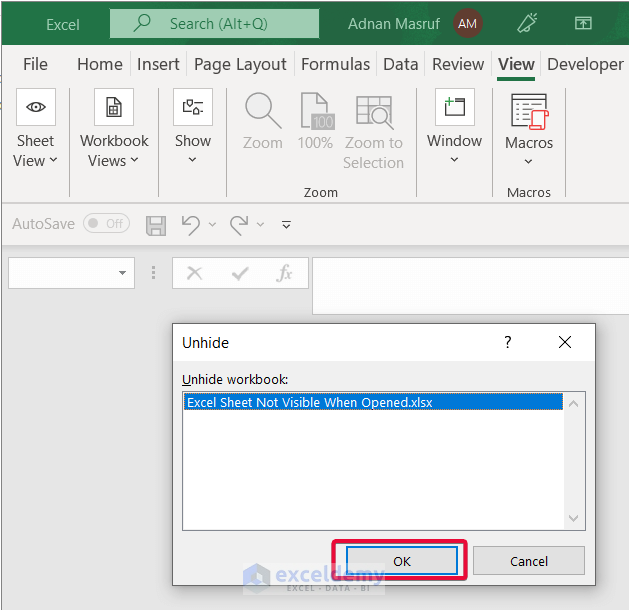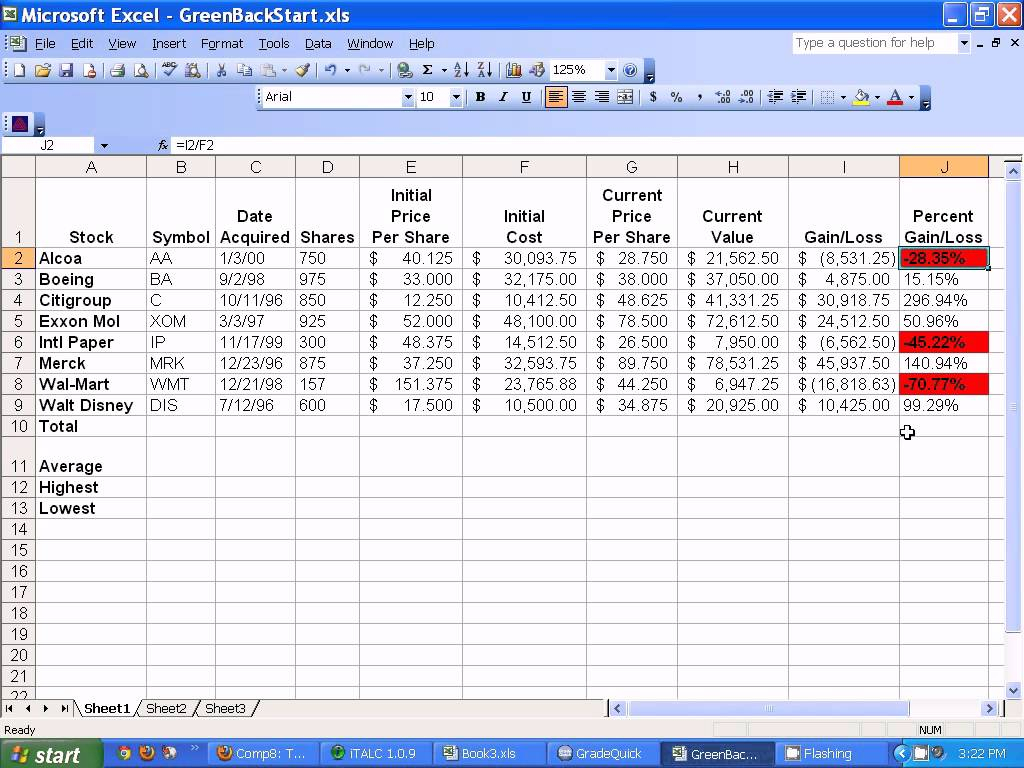5 Ways to Sum Across Excel Sheets Easily
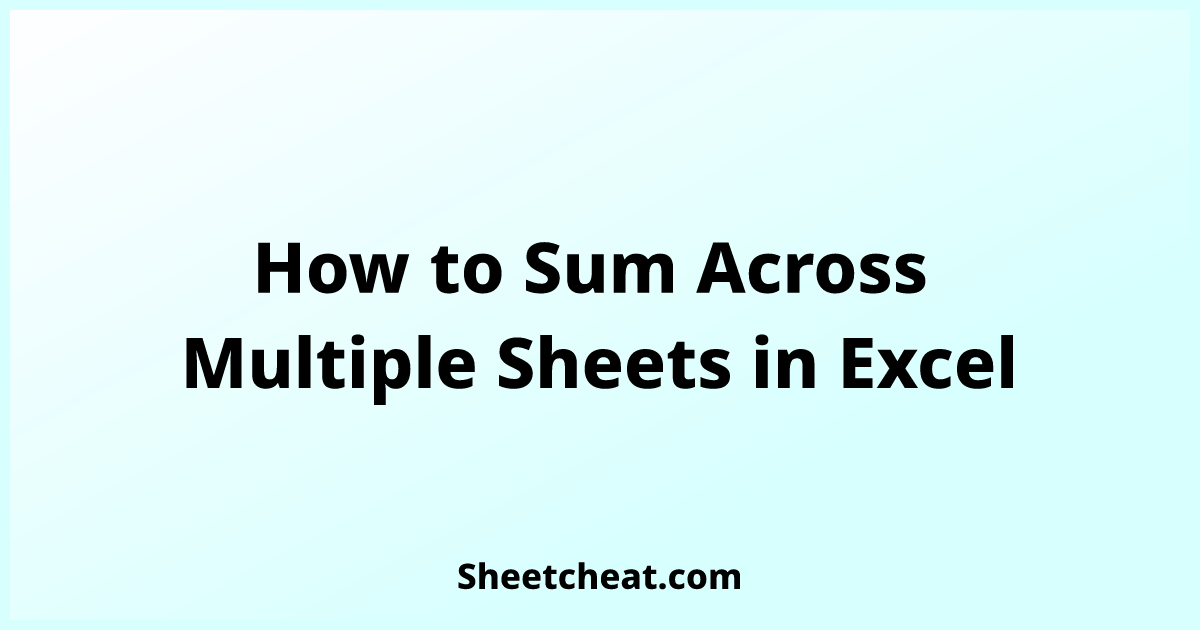
In Microsoft Excel, one of the most common tasks users need to perform is summing values across multiple sheets. This could range from summing sales data from different stores, consolidating financial reports from various months, or simply trying to compile totals from related but separate datasets. Excel provides several methods to make this process straightforward and efficient. Let's explore five ways you can sum across Excel sheets easily, ensuring your productivity remains high while handling complex spreadsheets.
Using 3D References
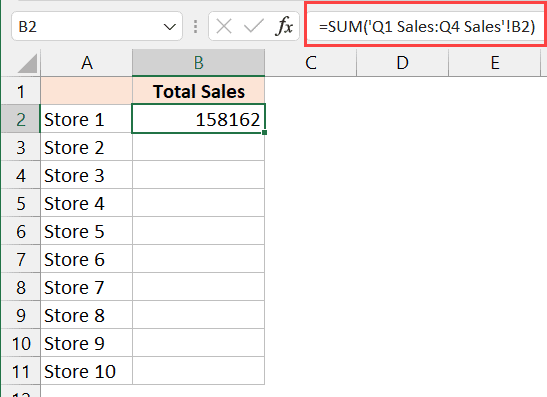
3D references in Excel allow you to sum across the same range of cells on different sheets. Here's how you can use it:
- Select the cell where you want the total to appear.
- Type in the formula:
=SUM(Sheet1:Sheet3!A1)if you want to sum cell A1 from Sheet1 through Sheet3. Note that the sheet names should be consecutive. - Press Enter, and Excel will calculate the sum across those sheets.
Note: This method is particularly useful when you have sheets that follow a logical sequence. If sheets aren't named sequentially, consider using another method.
Consolidate Function

The Consolidate function in Excel is an excellent tool when dealing with non-sequential sheets or when you need to sum data based on specific criteria:
- Go to the Data tab, and click on 'Consolidate'.
- In the Function box, choose 'Sum'.
- Add the range of data from the first sheet, then proceed with the 'Add' button to include other sheets.
- Ensure to check 'Create links to source data' if you want to update the consolidation automatically.
Here's what it looks like:
| Consolidate Feature Steps | Description |
|---|---|
| Data Tab → Consolidate | Begin the consolidation process. |
| Sum | The function to sum the values. |
| Add | Include ranges from different sheets. |
| Create Links | Option for automatic updating. |

Using SUMPRODUCT with INDIRECT
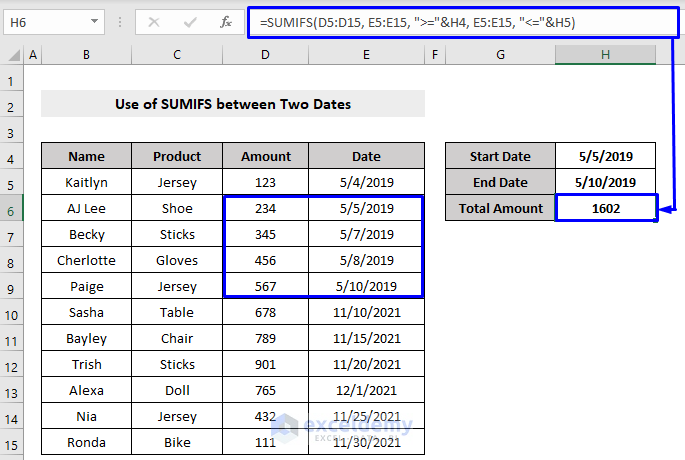
The SUMPRODUCT function combined with INDIRECT can offer a powerful solution for summing non-contiguous cells:
- Use this formula to sum non-contiguous cells:
=SUMPRODUCT(SUMIF(INDIRECT("Sheet1:Sheet3!A1:A10"),">"&0))
🌟 Note: Ensure the INDIRECT function uses valid sheet names; otherwise, it might return errors.
Named Ranges and SUM Function

This method is especially beneficial if you frequently sum data from specific ranges across sheets:
- Define a named range for each sheet or range of sheets.
- Then, use this named range within a SUM formula to combine the values.
Named ranges make formulas much more readable and easier to manage:
=SUM(FirstQuarterTotal, SecondQuarterTotal)where FirstQuarterTotal and SecondQuarterTotal are named ranges on their respective sheets.
Power Query for Advanced Summing

For more advanced users, Power Query provides a robust way to sum across multiple Excel sheets:
- Go to the Data tab and select 'Get Data' → 'From Other Sources' → 'From Microsoft Query'.
- Select the workbook containing your sheets, then choose the sheets you want to sum.
- Use Power Query's 'Group By' functionality to aggregate the sum:
Merge Queries as New
Sum Values > Group By → Choose ‘Sum’ as the Operation
By wrapping up these five methods, you now have a variety of tools at your disposal for summing data across different Excel sheets. From the simplicity of 3D references to the advanced capabilities of Power Query, each method offers its own unique advantages. Here are some final thoughts:
- Ease of Use: 3D References and Consolidate are straightforward for most users, offering quick solutions for basic tasks.
- Flexibility: Named ranges and SUMPRODUCT with INDIRECT provide more flexibility when dealing with specific, perhaps less structured, data sets.
- Power and Scalability: Power Query is your go-to tool for large datasets or when you need to perform more complex data manipulations.
Whether you’re handling monthly financial reports, comparing sales figures, or managing inventory from multiple locations, these methods will enhance your ability to efficiently sum across Excel sheets, saving time and reducing errors. Remember to choose the right tool for your specific task to optimize your workflow in Excel.
Can I use these methods to sum across sheets in different workbooks?

+
Yes, you can adapt most methods like Power Query to sum across different workbooks, but some might require additional steps or adjustments in how you reference the data.
What if my sheet names aren’t in order?

+
For methods like 3D references, your sheets should be consecutive. However, alternatives like named ranges or the consolidate function don’t require consecutive names.
How do I know which method to use?
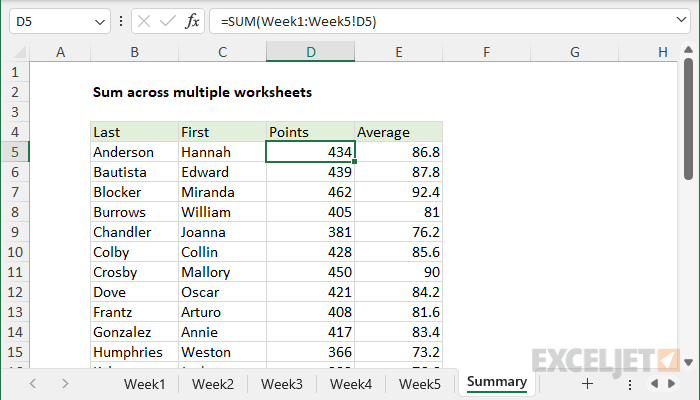
+
Consider the complexity of your data, the need for automation, and your comfort level with Excel’s features. Simple sums might require only 3D references or named ranges, while complex data manipulations will benefit from Power Query.
